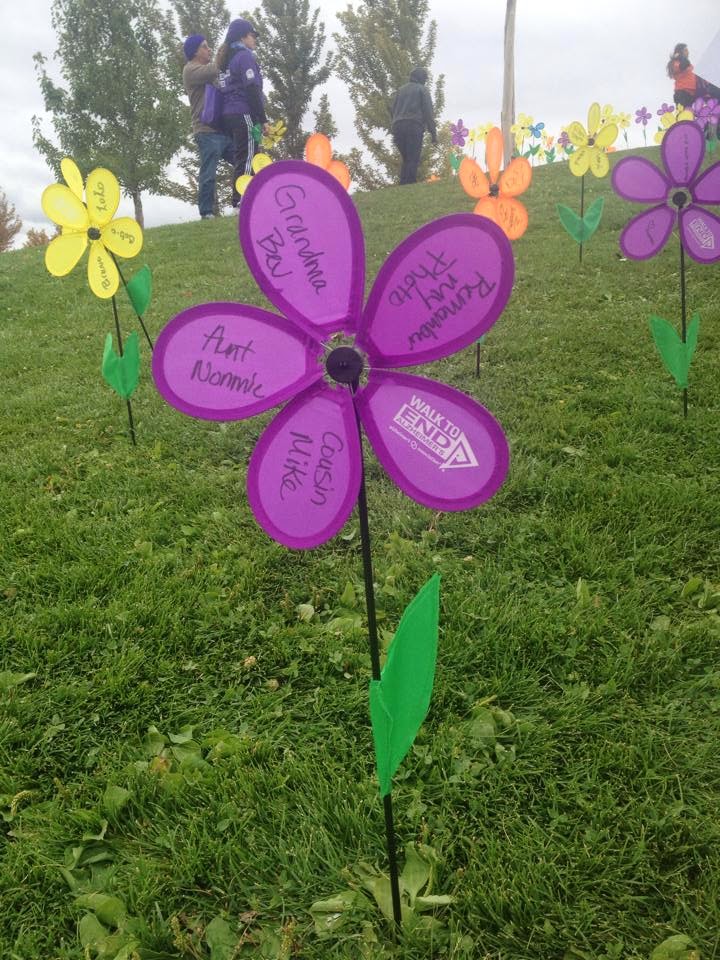 |
| Ready for the ALZ walk 2014!!! |
I arrived at 5:45am on Saturday September 27, 2014 to the
Sparks Marina. Coffee and water in tote, and decked out in my purple sweat suit
compliments of Cindy Locke, a Facebook friend whom had made it for me as a gift
for being Mrs. Nevada International.
 |
| Checking Walkers in for the walk. |
I helped set up the registration table. Once the walkers
began to arrive I helped check them in, collected additional donations, gave
them there purple wrist band and sent them on their way to meet up with their
other team mates for the walk. I was greeted by many smiling faces. Young and
old. All walking for different people. Loved ones, family members, mothers, fathers,
bother, sisters, aunts , uncles, grandma’s, grandpa’s, and friends.
 |
| On stage with my purple flower..... |
On stage I got to represent and hold up the purple flower to
symbolize that I have lost a loved one to Alzheimer’s . The tears flowed down
my face from the moment I walked on the stage to the moment I came off the
stage. I was not alone with my tears.
There were many in the audience that cried and held their loved ones hands. It was clear to me that this disease knew no boundaries
to of discrimination. It only knew to take loved ones lives by robbing them of their
memories and then there bodies.

 |
| My Awesome Walking Team! |
My walking team joined me off stage to start our walk. We were cheered on by the UNR Cheer leaders.
I was joined for the walk with several friends from Facebook. Stephanie
Campbell and her husband Scott, there two darling daughters and her parents
joined my team. Also my mother in law
joined me on the walk..With my team we gained strength in numbers which meant
we can fight this battle together. Supporting one another and sharing each of
our stories for the reasons we walk can bring us closer and break the stigma’s
around Alzheimer’s.
 |
| My family joined me for a bit. |
 |
| Walking with my team. |

The money we raised doesn't reverse the disease yet, or
bring back the ones that we have already lost along the way, but it does make
us stronger together and I hope to one day say I was part of the Alzheimer’s
association and we together raised money and found a cure. We had a goal to
raise $500.00 to end Alzheimer’s. We raised a total of $407.00 getting to 81%
of our goal. In the Reno Sparks community the goal was $125,000.00. The
community raised $112,125.42 getting to 90% of the overall community goal.
At the end of the walk there is a hill. I was able to go on
the hill and find the purple flower that had my grandma’s name on it to take it
home with me to place in my garden. Once
the walk was complete. I checked back to see if there were any additional volunteer
items to do before going home to rest.
This had been not only a memorable experience for me but an emotional
journey.
